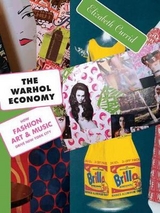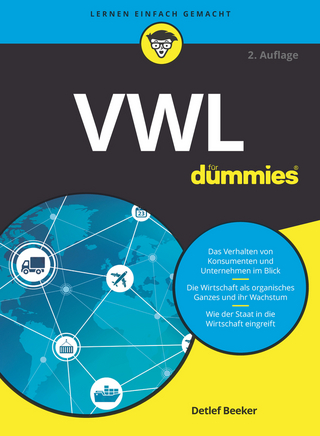
The Warhol Economy
How Fashion, Art, and Music Drive New York City
Seiten
2007
Princeton University Press (Verlag)
978-0-691-12837-5 (ISBN)
Princeton University Press (Verlag)
978-0-691-12837-5 (ISBN)
- Titel erscheint in neuer Auflage
- Artikel merken
Zu diesem Artikel existiert eine Nachauflage
Argues that industries like fashion, art, and music drive the economy of New York as much as - if not more than - finance, real estate, and law. This book takes the reader into the city spaces where the social and economic lives of creativity merge. It explains how the cultural economy works - and why it is vital to all great cities.
Which is more important to New York City's economy, the gleaming corporate office - or the grungy rock club that launches the best new bands? If you said 'office', think again. In "The Warhol Economy", Elizabeth Currid argues that creative industries like fashion, art, and music drive the economy of New York as much as - if not more than - finance, real estate, and law. And these creative industries are fueled by the social life that whirls around the clubs, galleries, music venues, and fashion shows where creative people meet, network, exchange ideas, pass judgments, and set the trends that shape popular culture. The implications of Currid's argument are far-reaching, and not just for New York.Urban policymakers, she suggests, have not only seriously underestimated the importance of the cultural economy, but they have failed to recognize that it depends on a vibrant creative social scene. They haven't understood, in other words, the social, cultural, and economic mix that Currid calls the Warhol economy. With vivid first-person reporting about New York's creative scene, Currid takes the reader into the city spaces where the social and economic lives of creativity merge.
This book has fascinating original interviews with many of New York's important creative figures, including fashion designers Zac Posen and Diane von Furstenberg, artists Ryan McGinness and Futura, and members of the band Clap Your Hands Say Yeah. The economics of art and culture in New York and other cities has been greatly misunderstood and underrated. "The Warhol Economy" explains how the cultural economy works - and why it is vital to all great cities.
Which is more important to New York City's economy, the gleaming corporate office - or the grungy rock club that launches the best new bands? If you said 'office', think again. In "The Warhol Economy", Elizabeth Currid argues that creative industries like fashion, art, and music drive the economy of New York as much as - if not more than - finance, real estate, and law. And these creative industries are fueled by the social life that whirls around the clubs, galleries, music venues, and fashion shows where creative people meet, network, exchange ideas, pass judgments, and set the trends that shape popular culture. The implications of Currid's argument are far-reaching, and not just for New York.Urban policymakers, she suggests, have not only seriously underestimated the importance of the cultural economy, but they have failed to recognize that it depends on a vibrant creative social scene. They haven't understood, in other words, the social, cultural, and economic mix that Currid calls the Warhol economy. With vivid first-person reporting about New York's creative scene, Currid takes the reader into the city spaces where the social and economic lives of creativity merge.
This book has fascinating original interviews with many of New York's important creative figures, including fashion designers Zac Posen and Diane von Furstenberg, artists Ryan McGinness and Futura, and members of the band Clap Your Hands Say Yeah. The economics of art and culture in New York and other cities has been greatly misunderstood and underrated. "The Warhol Economy" explains how the cultural economy works - and why it is vital to all great cities.
Elizabeth Currid is assistant professor at the University of Southern California's School of Policy, Planning, and Development. She holds a Ph.D. in urban planning from Columbia University. She divides her time between New York and Los Angeles.
PREFACE ix ACKNOWLEDGMENTS xiii CHAPTER 1: Art, Culture, and New York City 1 CHAPTER 2: How It All Began From the Rise of the Factory to the Rise of Bling 17 CHAPTER 3: Becoming Creative 45 CHAPTER 4: The Social Life of Creativity 66 CHAPTER 5: The Economics of a Dance Floor 87 CHAPTER 6: Creating Buzz, Selling Cool 114 CHAPTER 7: The Rise of Global Tastemakers What It All Means for the Policymakers 154 EPILOGUE 187 APPENDIX 191 NOTES 211 REFERENCES 233 INDEX 243
| Erscheint lt. Verlag | 29.7.2007 |
|---|---|
| Zusatzinfo | 25 halftones. 22 line illus. 5 tables. |
| Verlagsort | New Jersey |
| Sprache | englisch |
| Maße | 178 x 229 mm |
| Gewicht | 595 g |
| Themenwelt | Sozialwissenschaften |
| Wirtschaft ► Volkswirtschaftslehre | |
| ISBN-10 | 0-691-12837-5 / 0691128375 |
| ISBN-13 | 978-0-691-12837-5 / 9780691128375 |
| Zustand | Neuware |
| Haben Sie eine Frage zum Produkt? |
Mehr entdecken
aus dem Bereich
aus dem Bereich
Buch | Softcover (2024)
Kohlhammer (Verlag)
54,00 €



